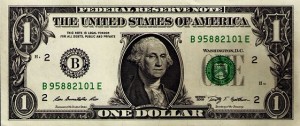President Nixon started the U.S. petro-dollar in August 1971 when the U.S. defaulted on gold-backed currency and closed the federal gold window. The petro-dollar agreement was that the U.S. would be Saudi Arabia’s military protector and buy Saudi Arabian oil, in exchange, Saudi Arabia would trade all oil in U.S. dollars. This agreement props up the demand for U.S. dollars and defends Saudi Arabia from its enemies.
But the world has changed since 1971:
- President Obama has abandoned defending Saudi Arabia
- China has replaced the U.S. as Saudi Arabia’s largest oil buyer and investor
- Russia is the world’s largest oil exporter and they no longer price oil in U.S. dollars
- Russia now handles Iran’s oil trade, no longer in U.S. dollars
- U.S. oil fracking has reduced U.S. oil imports so there is less foreign trade in U.S. dollars
- Increasing Asian trade is being done directly between currencies, not through the U.S. dollar
Each of these elements is chipping away at the need, demand, and value of the U.S. dollar in world trade. The U.S. is still the world’s largest economy but it used to be that +95% of all world trade went through the U.S. dollar as the world’s reserve currency. Today, the U.S. dollar still dominates world trade and derivatives at 90%, but this ratio has been in a downtrend over the last couple years reaching all-time-lows. China’s economy has already surpassed the European Union’s economy and is predicted to become the world’s largest economy in 3-8 years by surpassing the U.S. So sooner or later, the U.S. dollar will be dropped as the world’s reserve currency for either the Chinese yuan or SDR’s (Special Depository Receipts by the World Bank; a basket of currencies). As this transition occurs, all the money printing, reckless spending, and the insolvent U.S. Federal Reserve balance sheet will no longer be ignored by investors and traders. If you have any cash, assets, or investments, do you have a plan on how to migrate these into stronger currencies if the U.S. dollar begins a notable decline?

